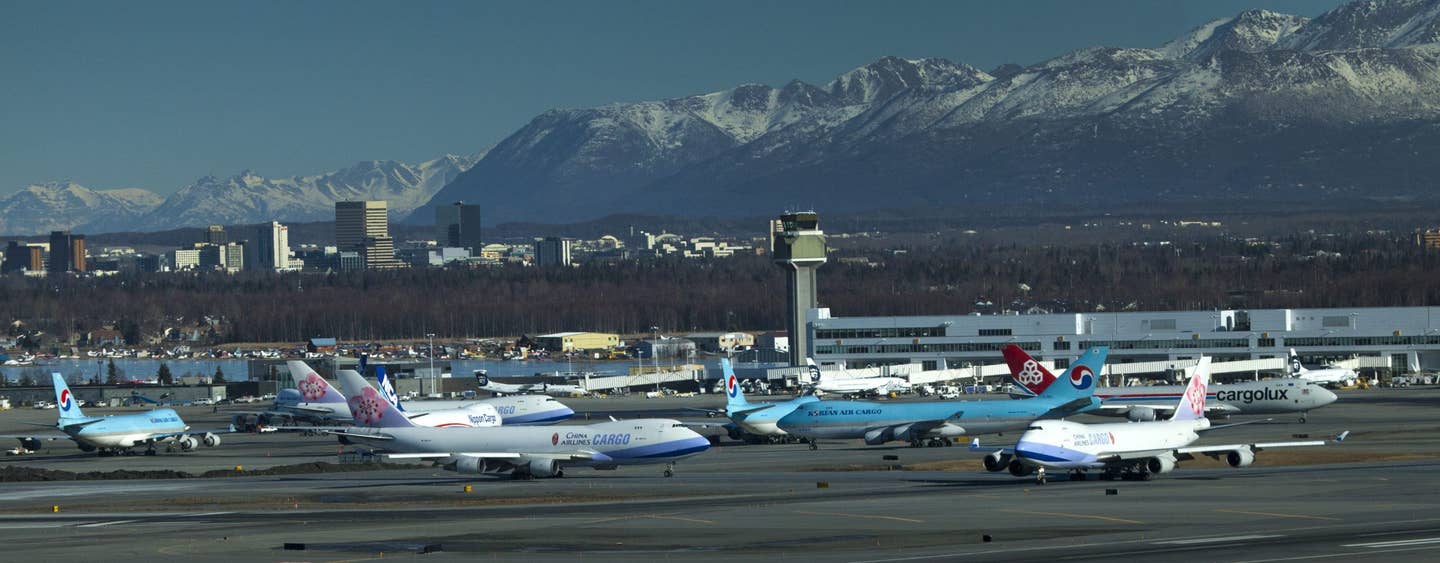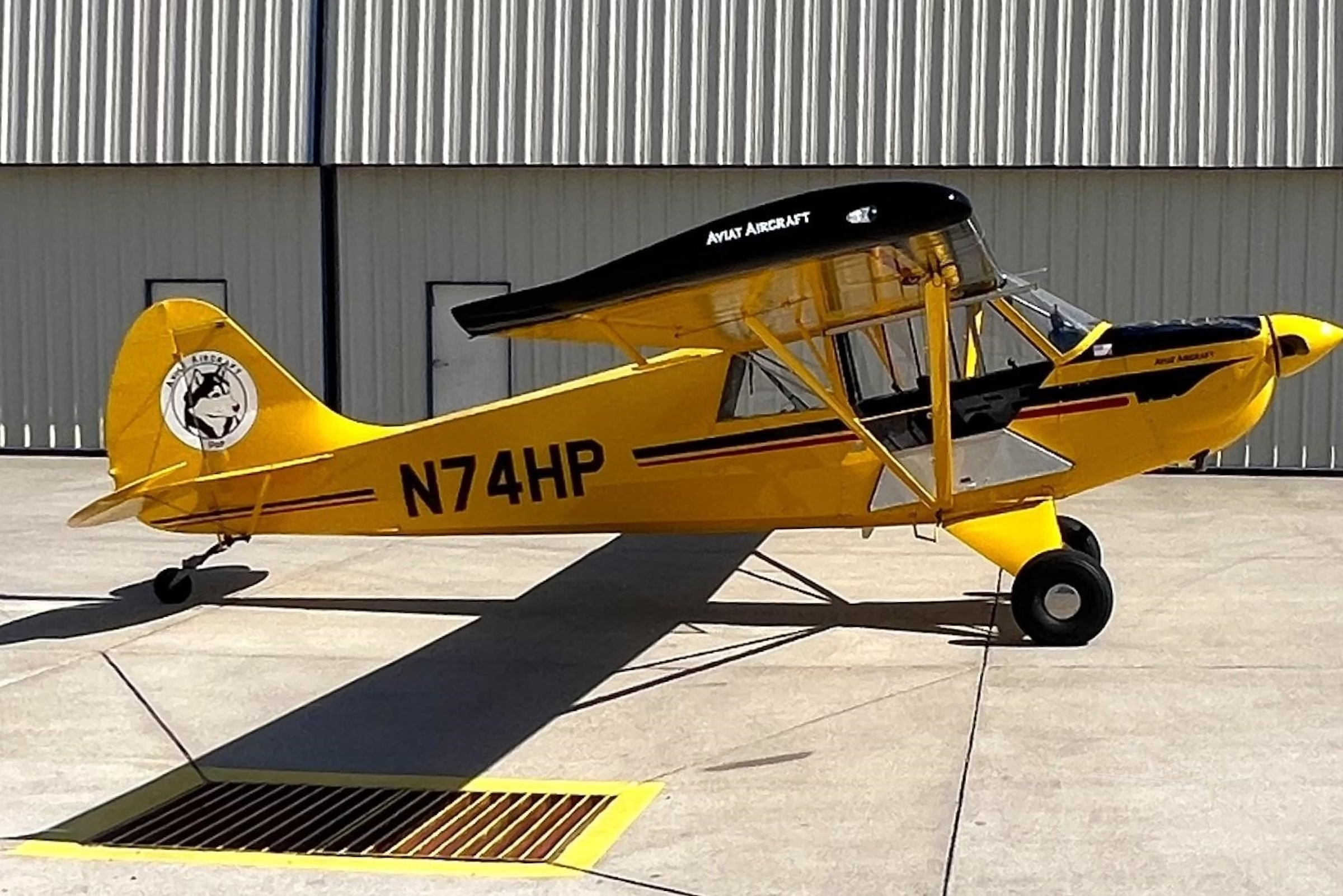FAA Awards $31 Million For Cargo Airport Improvements
The FAA Airport Improvement Program grants will pay for new taxiways, enhancements and repairs at nine cargo airports.

Ted Stevens Anchorage International Airport (KANC) is the fourth largest cargo hub globally. [Courtesy: Ted Stevens Anchorage International Airport]
Several key cargo airports in the U.S. are destined for improvements thanks to $31 million dollars in investments from the FAA. This week the agency announced nine airports across the country were the recipient of grants earmarked to improve cargo operations to help expedite the movement of goods through the country in effort to strengthen the nation's supply chain.
The money for these projects comes from the Airport Improvement Program (AIP). The program pays for a variety of projects at airports including the construction of new facilities, repairs to existing runways and taxiways and maintenance to aerodrome infrastructure such as signage and lighting, as well as the purchase of equipment needed to operate and maintain airports.
“These grants will provide lasting benefits today and well into the future for our economy,” notes Deputy FAA Administrator A. Bradley Mims.
U.S. Transportation Secretary Pete Buttigieg noted the projects will bolster the supply chain internally through its infrastructure improvements. “Today’s announcement will make improvements at airports across our country so they can handle cargo more efficiently and help strengthen America’s supply chains.”
Airports Receiving the Grants:
- Chicago Rockford International Airport (KRFD) in Rockford, Illinois, will receive $6,799,210 for the construction of a 4,267-foot taxiway and connectors to increase access to the south cargo apron. The airport was built in 1946 on the property formerly occupied by Camp Grant, a major training facility for the U.S. Army during both World Wars.
- Huntsville International Airport-Carl T. Jones Field (KHSV) in Huntsville, Alabama, will receive a $5,614,732 grant to rehabilitate 5,600 square yards of the existing air cargo apron and to expand the airport's existing access road. The city of Huntsville has had three airports over the last 90 years—the first Huntsville Flying Field-Mayfair Airport was built with sod runways and located south of the city. The second airport opened in downtown Huntsville in 1941 with two paved runways; it has since closed. The present airport opened in 1967 to take advantage of the jet age and the travel it encouraged.
- Greenville-Spartanburg International Airport (KGSP) in Greer, South Carolina, picks up $4,524,530 for rehabilitation of the existing taxiways and cargo apron pavement. The facility is the second-busiest airport in the state.
- Bishop International Airport (KFNT) in Flint, Michigan is expecting some $2,307,210 which will be used to rehabilitate some 37,400 square yards of existing cargo apron pavement including crack repair and joint sealing to 26,800 square yards of deicing apron surface. The airport was established in 1928 when the family of Arthur Giles Bishop gifted the City some 220 acres of their farmland to the city for aeronautical purposes.
- Ted Stevens Anchorage International Airport (PANC), Anchorage, Alaska, is slated to receive some $8,169,544 to be used for reconstruction of the taxiways and apron. The airport was built in the 1950s and sees a significant amount of cargo weight passing through it.
- Seattle-Tacoma International Airport (KSEA) in Seattle, Washington, will receive some $1,926,518 to be used for the reconstruction of 4,200 square yards of existing cargo apron. The airport was established in the late 1940s when it became apparent that air travel was here to stay and Boeing Field, now known as King County International Airport-Boeing Field (KBFI), had run out of room to grow. The airport opened a third parallel runway in 2008, which also triggered a redesign of the Seattle Class Bravo airspace.
- Eugene F. Kranz Toledo Express Airport (KTOL) in Toledo, Ohio—a civil-military airport located some 10 miles west of Toledo—is getting $1,071,768, which is designated for the rehabilitation of 27,670 square yards of cargo apron, a taxiway redesign, and a taxiway safety area erosion control system. The airport is home to the Ohio Air National Guard's 180th Fighter Wing.
- Stockton Metropolitan Airport (KSCK) in Stockton, California, will accept $417,036 to fund the design phase to rehabilitate 800 feet of the existing cargo taxilane pavement. The airport is a joint civil-military airport. During World War II the airport, then known as Stockton Field, was a training installation as part of the Western Flying Training Command. Today the California National Guard is based there.
- Rhode Island T.F. Green International Airport (KPVD) in Warwick, Rhode Island, will be taking a $197,310 grant to be used to design a new 60,000 square-yard cargo apron to accommodate increased use. The airport was established in 1931 as Hillsgrove State Airport. By the time the airport was renamed for newly elected Senator Green, it had three concrete runways. During World War II it became an Army Air Force training facility. After the war it was returned to civilian use and over the next decades continued to experience runway expansion as the needs of the community and the world changed.

Sign-up for newsletters & special offers!
Get the latest FLYING stories & special offers delivered directly to your inbox






